Abstract 8/2016
Table of content
Krystian Siwek – Selected issues of demand modeling in the Great Britain
Anna Górka – Characteristics of selected software for traffic simulations
Rafał Kucharski, Arkadiusz Drabicki, Andrzej Szarata – Modeling junction impedance in the macroscopic static traffic flow models – practical approach
Rafał Kucharski, Tomasz Kulpa, Andrzej Szarata – Transport mode-choice model in commuting to and from the work in Warsaw
Arkadiusz Drabicki, Rafał Kucharski, Andrzej Szarata – Incorporation of public transport network capacity constraints in macroscopic trip assignment model
Abstracts
Krystian Siwek
Selected issues of demand modeling in the Great Britain
Abstract: The purpose of this article is to discuss selected issues of demand modeling in the Great Britain. Precise knowledge of trips pattern inside study area is a critical point during model development and forecasts. Full understanding of journey decision process allows to create valid future scenarios. In this article three selected matters of demand modeling were shown – developing base year matrix, its calibration process and capability of variable demand model. The description includes basic functions and related formulas.
Key words: demand models, traffic structure, trip matrix calibration
Anna Górka
Characteristics of selected software for traffic simulations
Abstract: The article presents characteristics of selected programs for traffic modeling at signalized intersections. Author describes of methods of entering the data, necessary assumptions and specificity of operation on the Vissim and Synchro programs. It has been presented on the example of one of Warsaw’ intersections . The article presents an evaluation and comparison of possible simulation results. Practical applicability in the evaluation of new solutions has been estimated.
Key words: road traffic , traffic microsimulation, Vissim, Synchro
Rafał Kucharski, Arkadiusz Drabicki, Andrzej Szarata
Modeling junction impedance in the macroscopic static traffic flow models – practical approach
Abstract: In the article we propose method to model a junction impedance in the static macroscopic traffic network graphs. The available network database is used to parameterize the Warsaw road’ network. We use the generic data for the urban network: link types, node types, turn types and traffic signs. Thanks to this we are able to apply fundamental Intersection Capacity Analysis formulas (Gaca, et al. 2008) and compute the capacities and travel times for the turns in the network of Warsaw. The methods are proposed both for signalized, uncontrolled intersections and roundabouts. We propose heuristics for effective green, saturation flow, main flow and number of lanes, which can be practically applied in the urban macroscopic models. We apply and parameterize the Akcelik (1981) delay formulas to calculate the total travel time in the congested network. The paper is illustrated with both signalized and uncontrolled junctions in Warsaw. The results are plausible and the model can be further tested in practical applications.
Key words: ICA, network graph, impedance, junction impedance
Rafał Kucharski, Tomasz Kulpa, Andrzej Szarata
Transport mode-choice model in commuting to and from the work in Warsaw
Abstract: In the article the mode-choice model is formulated for the Home-Work-Home trips of Warsaw commuters. Model is calibrated to match the results of the Warsaw Traffic Study (WBR2015) where almost 7 thousands such trips were reported. The Traffic Study revealed the journey diary of the trips conducted the day before. Data included trip purpose, traveler status, car availability, origin and destination and the chosen mode. Which, coupled with the modeled data for the unchosen alternatives, allowed to formulate and calibrate the discrete mode-choice model. We propose several formulations of the binomial logit model and analyzed the fit. We obtained model reasonably explaining the mode-choice behavior when using the context variables (age, car availability), and trip-related variables (travel time, parking, service frequency etc.) To parameterize the model we use BIOGEME, broadly used to estimate the discrete-choice binary models. The article is concluded with the final form of the model, further used in the traffic demand model.
Key words: discrete-choice model, modal split, BIOGEME, logit model
Arkadiusz Drabicki, Rafał Kucharski, Andrzej Szarata
Incorporation of public transport network capacity constraints in macroscopic trip assignment model
Abstract: The notion of modelling the effects of public transport capacity constraints has been investigated in numerous research works, yet its implementation in transit assignment approach remains rather limited – e.g. it has only been included in most recent versions of the PTV VISUM modelling software. This article presents results from sample macroscopic transport network models and highlights the arising differences at trip assignment stage (especially in terms of passenger flows) once implicit capacity constraints are taken into account. Based on these, we try to evaluate the credibility of assignment results, discuss further calibration works, as well as indicate fields for future research studies. Path choice algorithm in macroscopic assignment model is principally – as a default –a function of journey times and service frequencies, whereas the inclusion of line (service) capacity might have a notable effect on simulation output – especially when considering various public transport modes with distinct transportation capacities, i.e. mass transit (urban rail, underground) vs. feeder systems (light rail, monorail).
Key words: public transport, trip assignment, capacity constraints, passenger overcrowding, PTV VISUM

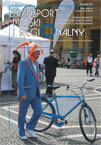 SITK RP
SITK RP 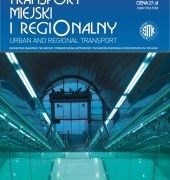 SITK RP
SITK RP 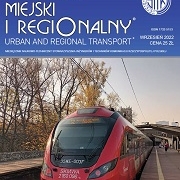 SITK RP
SITK RP 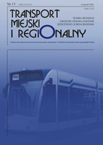 SITK RP
SITK RP 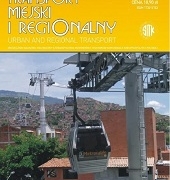 SITK RP
SITK RP 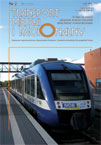 SITK RP
SITK RP 
 SITK RP
SITK RP SITK RP
SITK RP